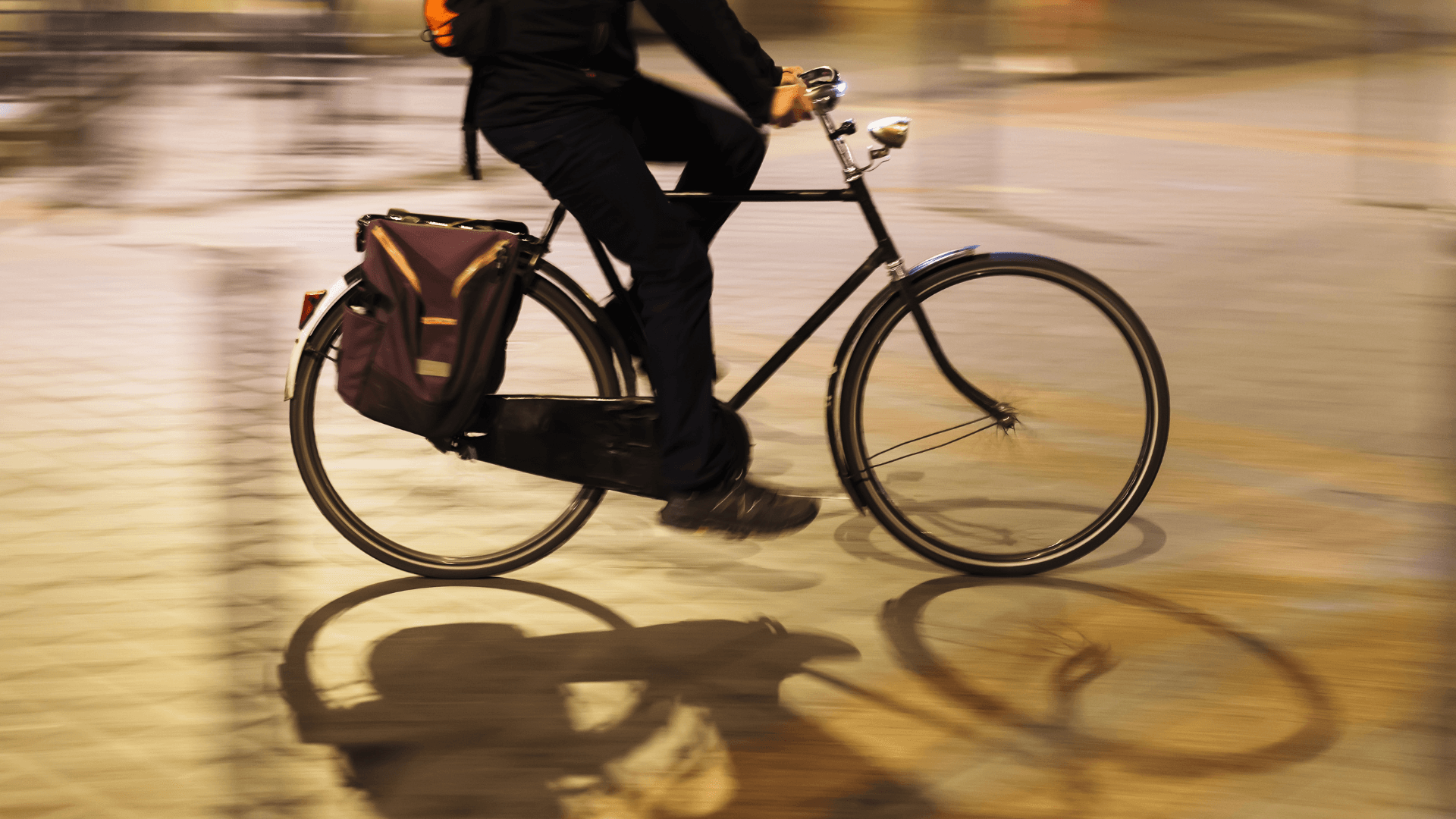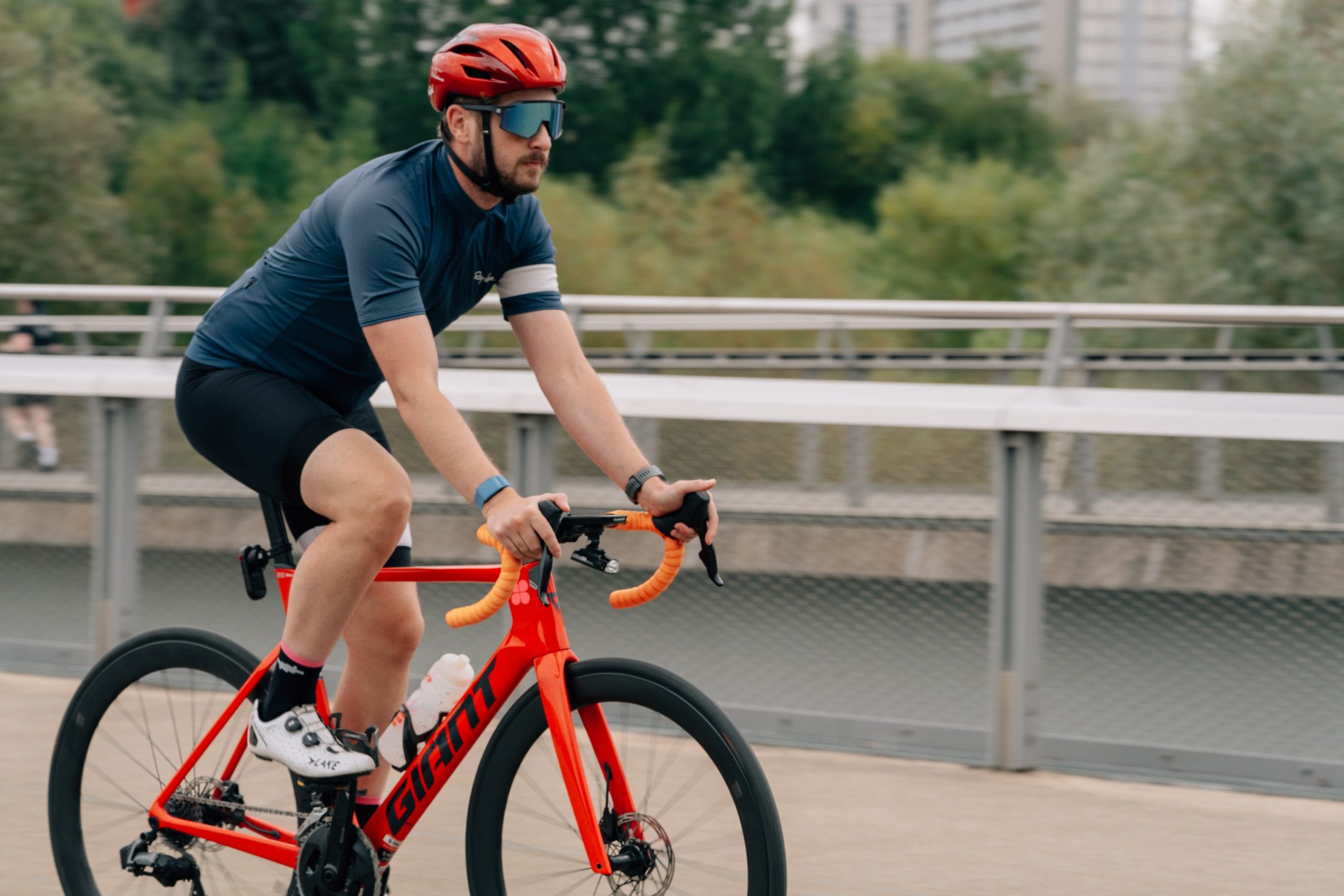Top Five Off-The-Bike Flexibility Exercises

Sam Siequien
Physiotherapist
- 26 October, 2018
- Cycling
- Exercise
- 4 min read
Top Five Off-The-Bike Flexibility Exercises
Maintaining flexibility not only helps reduce the risk of injury for cyclists but can also make a dramatic difference in your general bike fit position and riding efficiency.
This may be a crucial step in becoming more comfortable on your bike, allowing you to apply more power to the pedals or getting more aero so you slip through the wind more efficiently.
‘But how do you become more flexible?’ we hear you ask. You may be thinking that you have felt stiffer and less flexible as you have gotten older, and as much as that is natural, it doesn’t mean that you can’t do anything about it or that you have to simply ‘put up’ with feeling tight or uncomfortable when cycling.
Maybe you think it’s a typical character trait of cyclists? You could be right there as well, but as our point still stands, you don’t have to suffer in silence.
Keep reading for our top five flexibility drills that can help you find that key range of movement and feel lighter and easier on your bike.
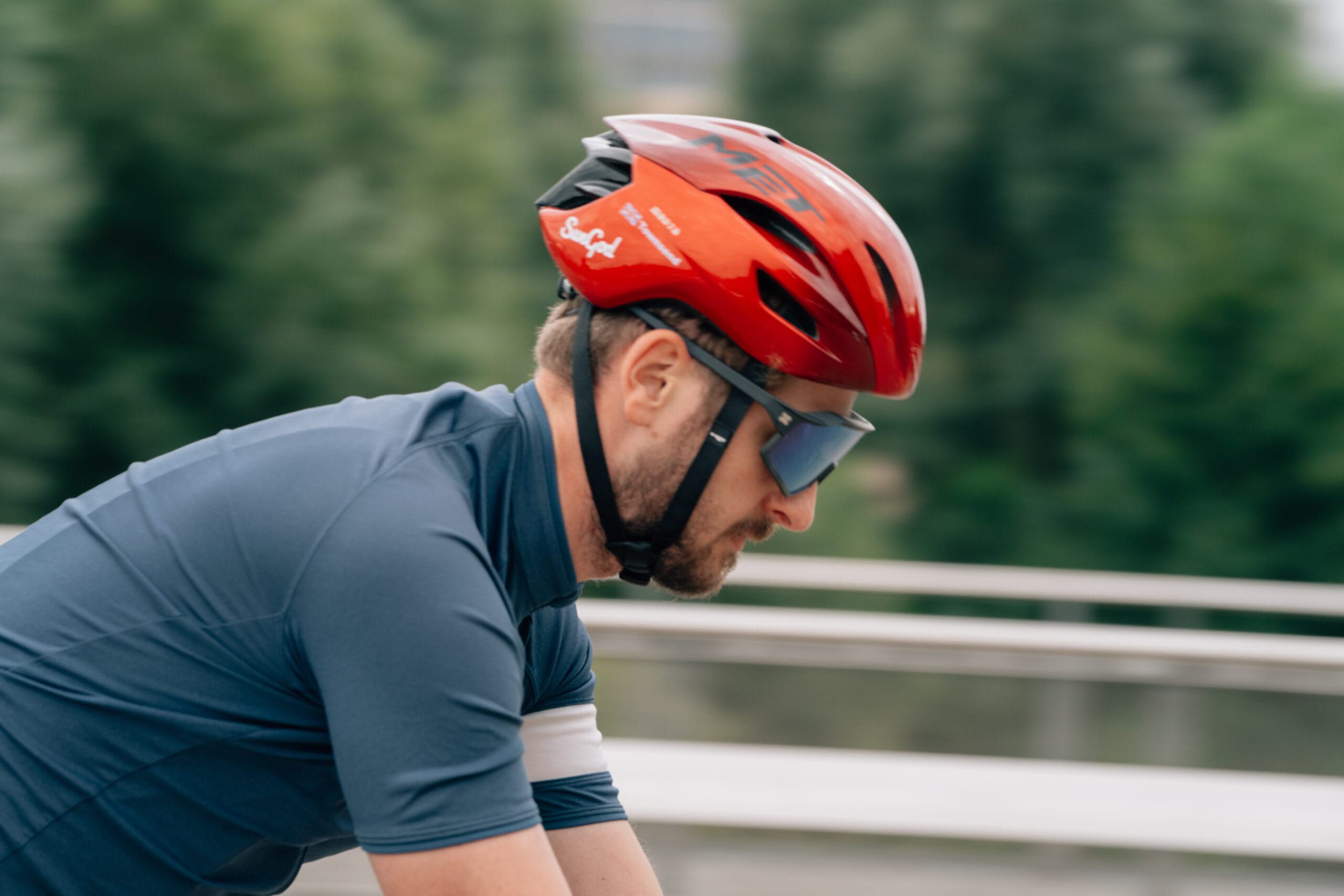
1. Hamstring stretch
You simply will not be able to achieve a good forward bend through the hips and lumbar spine without good hamstring length, so this should be your first port of call. This will help you achieve a more ‘aero’ handlebar reach position and maintain an efficient pedal stroke even at the bottom dead centre, or maximum extension, position.
How to do it:
- Simply lie down on the floor with one leg up on the wall (a doorway works well for this)
- Place the leg so that the knee is straight and relaxed; you should be able to feel a moderate stretch in this position. If you do not feel any stretch, move slightly closer to the wall. If you are unable to straighten your knee, you will need to move back slightly from the wall
- Hold this position for up to 1 minute, relax
- Repeat on the other side
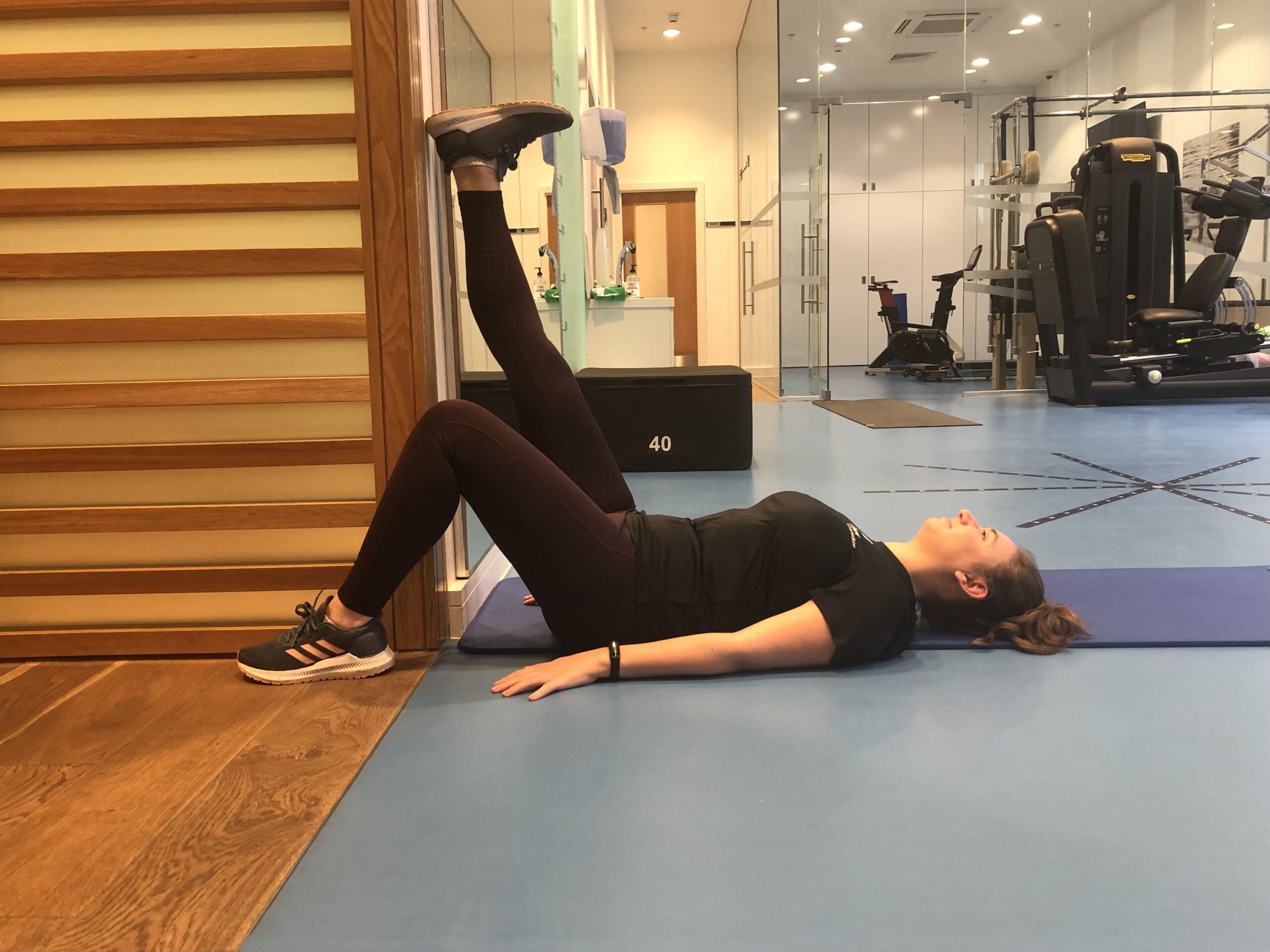
2. Hip Flexor Stretch
In quite the opposite respect to the hamstrings, it is very important to maintain good length in your hip flexors.
These muscles spend a long time in a relatively shortened position through both time on the bike, especially at the top of the pedal stroke, and sitting at a desk. This can lead to muscle tightness and a weak hip drive in the pull phase of your pedal stroke, but also low back pain on longer rides, by impacting your pelvis’ position on the saddle.
How to do it:
- Place a mat on the floor and get into a half kneeling position with the knee on the floor of the hip you are stretching
- Start by tilting your pelvis upwards (flattening your lower back), then slowly squeeze your glutes to push the hips slightly forward. You should feel a progressive stretch at the front of the hip and down the thigh
- Hold (with glutes squeezing) for 30 seconds, relax
- Repeat on both sides
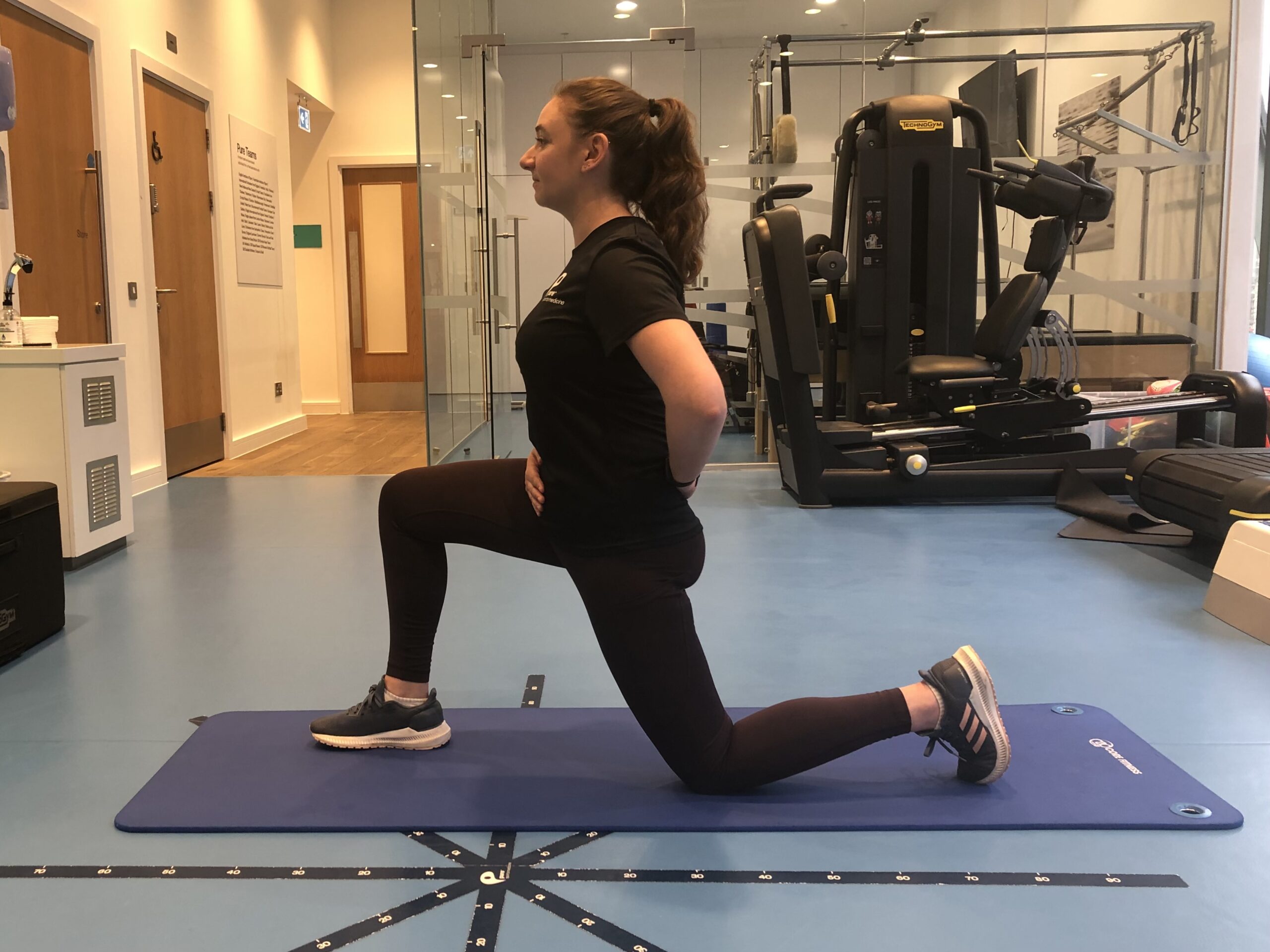
3. Thoracic Spine Stretch
Once again, this is an area that takes a beating both sitting at the desk and riding your bike. It has to be able to sustain long periods in some degree of flexion whilst also maintaining your position on the handlebars. Some work must be done here to allow you to maintain this position without adversely affecting your posture and comfort on the bike.
How to do it:
- Using a foam roller, position it length-ways and lay back down along your spine; keep your knees bent so as not to put pressure on your lower back
- Arm position can vary, but placing your arms out to the side is a great way to stretch the front of the shoulders and chest at the same time
- Hold for 2 – 3 minutes
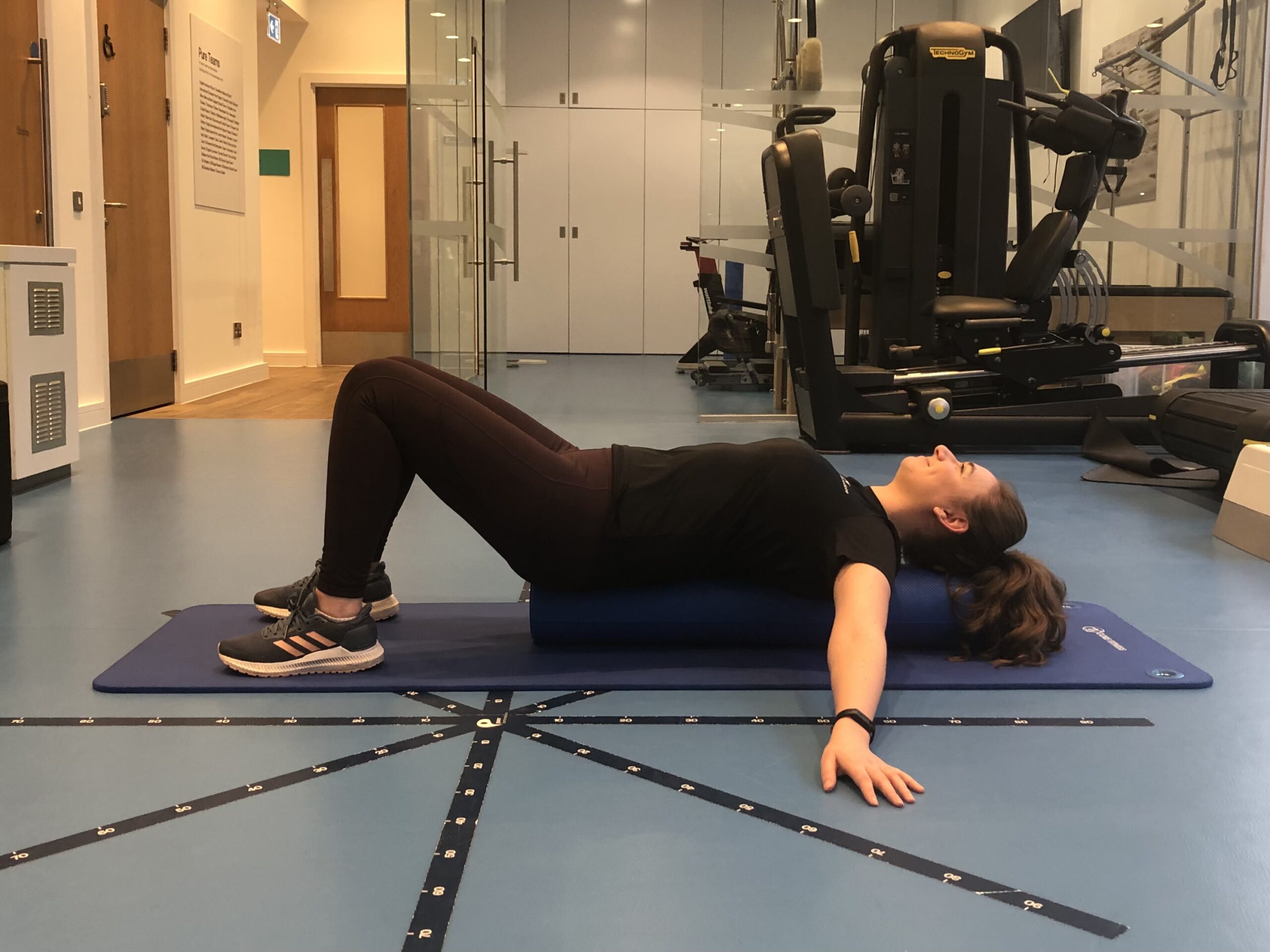
4. Iliotibial Band (ITB) Stretch
This non-contractile band of connective tissue runs down the outside of your thigh and takes a lot of stick for ‘causing’ various knee complaints, however, it’s really the muscles that it originates from (Tensor Fascia Lata and Glute Max) that we should be focusing on to alleviate some of the tension.
On a bike, these muscles and ITB play an important role in stabilising your knee throughout the pedal stroke, keeping everything in-line to allow for a maximally efficient downward pedal stroke.
How to do it:
- Lie on your side with your lower hip bent at 90 degrees, grasp the ankle on the top leg and slowly extend your hip until you feel a stretch on the front of the hip
- Then, slowly allow your knee to drop downwards to focus the stretch onto TFL
- Hold for 30 seconds, repeat twice
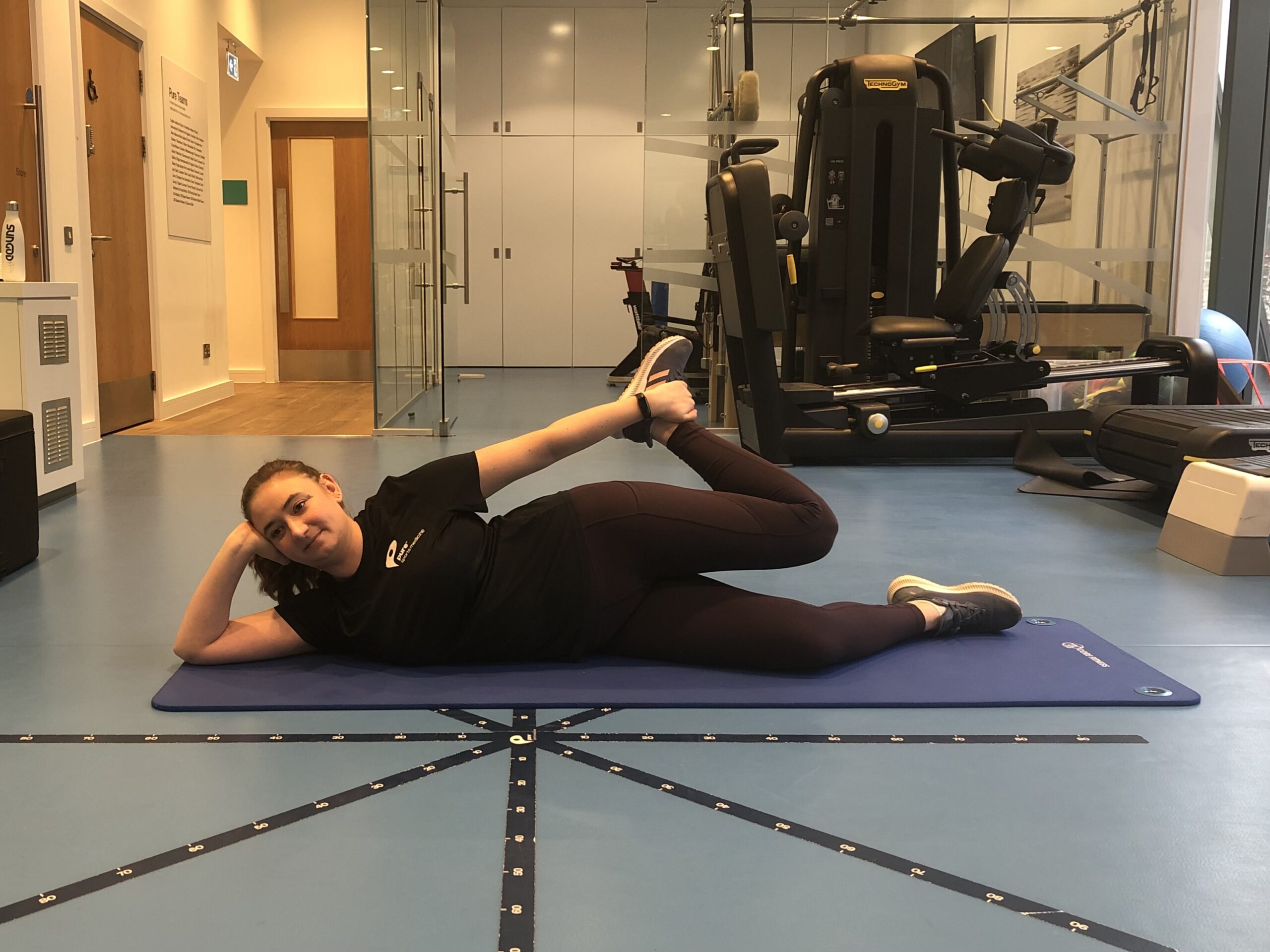
5. Latissimus Dorsi Stretch
This large muscle fans out from the middle of your lower back and inserts right under your armpit. Because of its shape and orientation, it can affect the amount of reach to your bars you may be able to obtain on the bike. With a larger reach, you’re able to tuck into a more aero position, but also reduce the tension through your neck and shoulders as you can relax into your reach position.
How to do it:
- Start by kneeling on the floor, reach your arms out in front of you with thumbs pointed upwards
- Once in this position, try to sit back onto your heels, keeping your arms out in front and then reach your arms out to the side until you feel a stretch along the side of your back.
- Hold for 30 seconds, and repeat twice on each side.
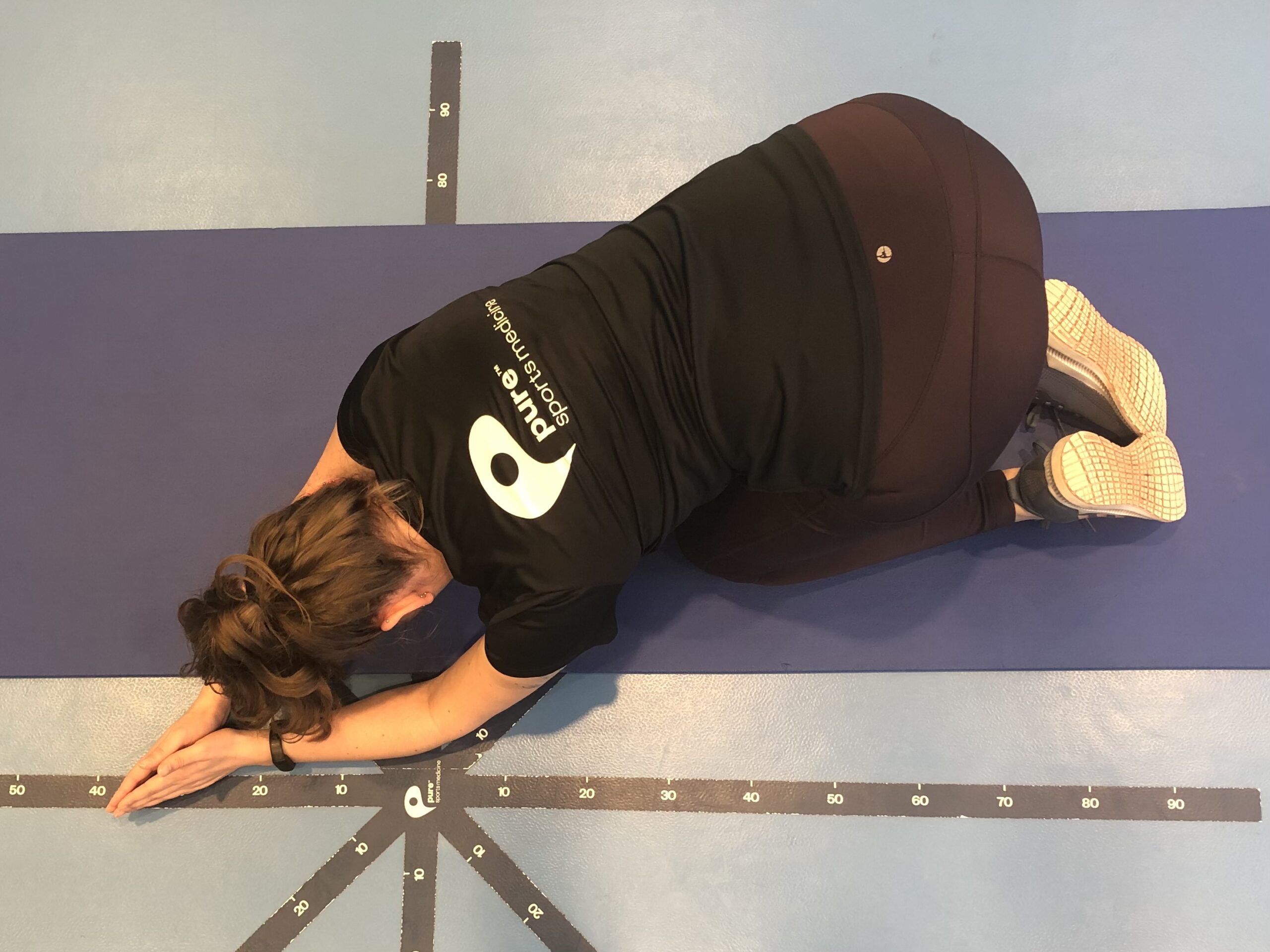
This is by no means an exhaustive list, but it’s certainly a good place to get started with regard to improving your position on the bike.
It’s also worth paying attention to the flexibility of your quadriceps and calves, which undergo heavy loads during cycle training, though have less of an impact on your position on the bike. For more advice, speak to one of our Physiotherapists, Clinical Bike Fitters or Strength & Conditioning Coaches today.

Advice
Over the last 20+ years our experts have helped more than 100,000 patients, but we don’t stop there. We also like to share our knowledge and insight to help people lead healthier lives, and here you will find our extensive library of advice on a variety of topics to help you do the same.
OUR ADVICE HUBS See all Advice Hubs